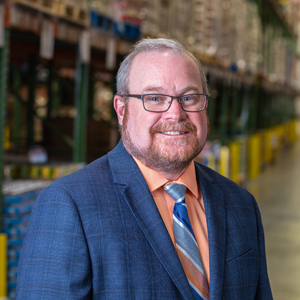Farm sector exports and profits are down sharply as escalating tariffs choke off international trade. Yet one group is benefitting from the tariff wars: over 40 million food insecure Americans who struggle to buy groceries.
The administration is partially offsetting farmers’ lost exports income through USDA’s special trade mitigation program that includes last September’s initial $12 billion Market Facilitation Program and an additional $16 billion in this year’s aid package announced May 23. The bulk of the payments – USDA says $8.56 billion for the first round has already been distributed as of May 28 – go directly to producers under the MFP.
But the mitigation packages also include 2018’s $1.2 billion and 2019’s $1.4 billion for USDA to help boost farm prices by purchasing food products ranging from milk, meat and potatoes to oranges and nuts via the Food Purchase and Distribution Program (FPDP). A third part of the program – the Agricultural Trade Promotion Program – provided $200 million in 2018 and another $100 million in 2019 to help develop new export markets.
The unexpected food is welcome news for the nation’s needy. Michael Halligan, CEO of God’s Pantry Food Bank in Kentucky, tells Agri-Pulse the food led to an “amazing sight” in early May.
“A child was selecting food with his mother at the pantry on North Broadway in Lexington. When the youngster walked into the pantry he saw bags of oranges in a storage bin,” Halligan said. “He shouted, ‘mom, mom, MAMA,’ ran to the bin, grabbed a bag of oranges, and then ran back to place the bag in their shopping cart. The mom shared with me that they can’t afford oranges and her son loves them. She had a tear in her eye but a smile on her face.”
God’s Pantry Food Bank’s advance planning began last August when the administration first launched the program. The planning continues to cope with USDA roughly doubling its normal deliveries to food banks. Halligan points out that “In June through September, we have 82 semi-truck loads of product scheduled for delivery.”

Michael Halligan, God's Pantry Food Bank
After distributing 2.7 million pounds of FPDP food so far this year, Halligan says “another 1.2 million pounds is on order through September and we are beginning to plan for orders for the October to December timeframe … and look forward to placing additional orders well into 2020.”
Halligan calls the FPDP “a highly efficient and effective program” that enables his food bank to get milk “often within 24 hours of bottling” and deliver it to “a person’s refrigerator with about 10 days of remaining shelf-life.”
While some other food banks have struggled to handle milk and other short-shelf-life perishables that require cold storage, Halligan says his food bank was prepared for the challenge and has never had to turn away deliveries. He and other food bank officials explain that although there were initial concerns months ago, USDA both listened to food bank requests and responded by adjusting delivery logistics and product packaging.
One major concern was packaging. USDA’s preference, reflecting supplier preferences, in the past has been delivering 40-pound boxes of meat and gallon jugs of milk. Today’s USDA deliveries instead focus on consumer-friendly sizes that even an elderly single person can take home on the bus.
Jennifer Porter, deputy administrator for livestock and poultry programs for USDA’s Agricultural Marketing Service, explained at a U.S. Meat Export Federation conference in May that USDA is shifting to what food banks “would like to have” even though “the popular products may not always meet the industry's needs.”
Caught between the meat industry goal to move product versus consumer preferences for “pork patties,” not five-pound roasts in 40-pound boxes, Porter acknowledged that the mitigation package’s “ultimate goal” is removing price-depressing large volumes from the commercial food chain. She highlighted the challenge for USDA: “the more we spend on packaging, and the more we spend on offsetting transportation costs, the less product we’re removing, and we’re really not meeting that ultimate goal.”
Bill Collins, COO of Second Harvest Food Bank of Central Florida, welcomes USDA’s significant shift from industry goals to consumer preferences. He tells Agri-Pulse that in a break with the past, USDA now provides “more user-friendly sizes, rather than bulk.” He adds that despite the extra packaging costs, USDA now delivers smaller-size brand-name products, eliminating “the stigma of having that USDA label on there so everybody knew” it was donated food.
Highlighting how Central Florida’s food distributions help, the FAITH Neighborhood Center in Groveland reports that “On a visit last week, one mother received a variety of shelf stable items, along with meat, bread and produce, but she was particularly grateful for the milk” and explained “This means I no longer have to put water on my kids’ cereal in the morning.”
The Kentucky and Florida food banks are part of Feeding America, the nation’s largest hunger relief network with its 200 food banks supplying over 60,000 food pantries and other food donation programs. Carrie Calvert, Feeding America’s managing director of government relations, tells Agri-Pulse that USDA’s virtual doubling of its food donations thanks to the two iterations of FPDP “has been extremely helpful,” but “it would take an additional $20 billion to close the meal gap that the 40 million Americans living with food insecurity face.”
Calvert acknowledges the surge in USDA deliveries has created some “growing pains” such as the sudden floods of gallon jugs of milk with rapidly approaching expiration dates. But she credits USDA for responding to food banks’ concerns by providing funds to food banks to reimburse some of the added storage and distribution costs, and by encouraging greater program flexibility and smaller package sizes.

Carrie Calvert, Feeding America
Feeding America faces another obstacle in doubling deliveries: some states only allow one food distribution per month per family or limit the amount of food each family can receive per visit.
Calvert expects that with 300 million pounds of FPDP food already distributed, this year’s deliveries for the first FPDP will total over 600 million pounds. That’s in addition to USDA’s regular TEFAP (The Emergency Food Assistance Program) deliveries, which totaled 631 million pounds in 2018 and 740 million pounds in 2017. With the new food pouring into the TEFAP pipeline, she says “we have told our food banks to anticipate receiving around 1.2 billion pounds of food through TEFAP this year.”
According to Collins, Second Harvest delivers about 8 million pounds of food each year. For 2019 “we’ve already done close to 13 million pounds and that was prior to this year’s new tariff mitigation announcement.” A storage capacity expansion and a timely donation of milk coolers helped the food bank adapt to the influx of product.
Sheila Creghin – vice president of operations for the Greater Chicago Food Depository, a food bank serving over 800,000 people in Chicago and Cook County area – explains that for the fiscal year ending June 30, her food bank will deliver about 22 million pounds of USDA-donated food, with 10 million pounds of that from FPDP.
Creghin says this food, plus even larger amounts scheduled over the next year, is being distributed successfully “thanks in large part to the hard work of our employees and partner agencies” – and thanks to more than $650,000 that USDA is paying to cover some of the food bank’s additional costs for the FPDP surge.
For more news, go to www.Agri-Pulse.com.


